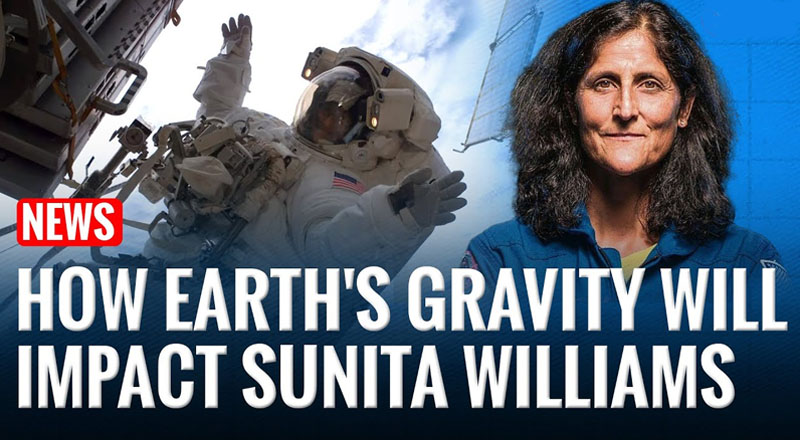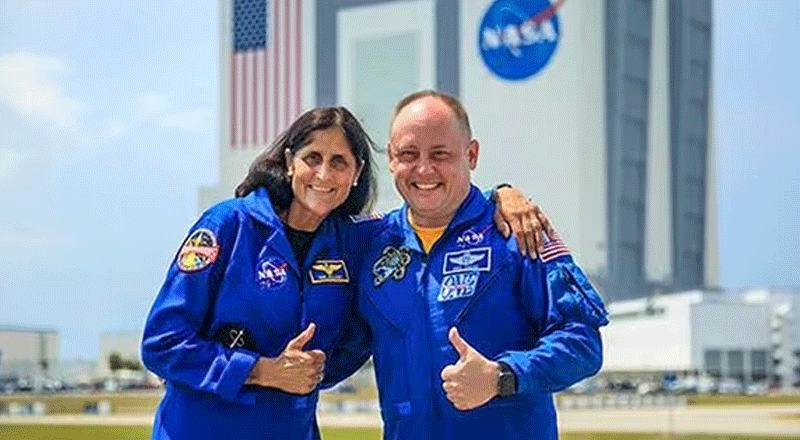A Mission Extended, A New Challenge Ahead
NASA astronauts Sunita Williams and Butch Wilmore embarked on a space journey aboard Boeing’s Starliner in June 2024, expecting to spend just over a week aboard the International Space Station (ISS). However, due to technical issues with the spacecraft’s thrusters, their return was repeatedly delayed. Now, after more than eight months in space, their homecoming is finally set for March 19, 2025.
While the return to Earth marks the end of their prolonged mission, it also presents a new and unexpected challenge—readjusting to the force of gravity. For astronauts who have spent months floating in microgravity, Earth’s pull can feel overwhelming, making even simple movements like lifting a pencil a struggle.
The Harsh Reality of Gravity
After months of weightlessness, Williams and Wilmore will have to relearn basic movements, as their muscles, bones, and cardiovascular system adjust to Earth’s environment.
“Gravity is really tough,” Wilmore admitted in an interview. “It starts pulling everything to lower extremities; fluids will be pulled down, and even lifting a pencil will feel like a workout.”
Williams echoed his concerns, explaining that regaining full mobility and muscle function is a slow, day-by-day process. The sudden change in gravity can cause astronauts to feel overwhelmingly heavy and disoriented, making simple activities like standing or walking incredibly difficult.
The Long-Term Effects of Space Travel
Prolonged exposure to microgravity takes a toll on the human body, and NASA has extensively studied the physiological changes that astronauts experience. Some of the most significant challenges include:
- Bone Density Loss: Astronauts lose 1-2% of their bone mass per month in space, increasing the risk of fractures upon their return.
- Muscle Atrophy: Without the need to support body weight, muscles weaken, making movement difficult.
- Fluids Redistributing: In microgravity, fluids move toward the upper body, causing “puffy face syndrome.” Once back on Earth, these fluids shift downward, leading to swollen legs and a sensation of extreme heaviness.
- Heart Readjustment: The heart, accustomed to working with less effort in space, must suddenly pump harder, often leading to fatigue and dizziness.
- Balance Issues: The vestibular system in the inner ear, which controls balance, is affected by weightlessness. Returning astronauts often experience disorientation, difficulty walking, and even nausea.
Additionally, research by the European Space Agency (ESA) warns that extended periods in microgravity may contribute to early signs of arthritis, as cartilage weakens due to inactivity.
The Road to Recovery
To counteract these effects, NASA has developed a rigorous rehabilitation program to help Williams and Wilmore regain their strength and mobility. Their recovery will include:
- Strength Training: Resistance exercises to rebuild muscle mass and bone density.
- Cardiovascular Conditioning: Treadmill and cycling exercises to retrain the heart and improve circulation.
- Neurological Therapy: Specialized exercises to restore balance and coordination.
- Nutritional Support: A diet rich in calcium and vitamin D to promote bone healing.
Interestingly, a Johns Hopkins University study suggests that jumping exercises may help mitigate cartilage damage. The study found that after three weeks of jump training, mice exhibited thicker and healthier cartilage, indicating that similar methods could benefit returning astronauts.
The Journey Home
Williams and Wilmore’s return to Earth will be aboard SpaceX’s Dragon spacecraft, following delays caused by scheduling changes in NASA’s Commercial Crew Program. Despite speculation that they had been “abandoned” in space, Wilmore reassured the public, stating: “We don’t feel abandoned. We don’t feel stuck. We don’t feel stranded. We come prepared. We come committed. That is what your human spaceflight program is about.”
NASA has confirmed that the astronauts will return only when the Crew-9 mission, which includes them, is relieved by Crew-10 aboard the ISS. Originally planned for February 2025, the mission was postponed to late March, further delaying their homecoming.
A Testament to Human Resilience
The challenges awaiting Williams and Wilmore upon their return highlight the extraordinary adaptability of the human body—and the immense dedication of astronauts who push the boundaries of space exploration.
While they face a long and demanding recovery, their journey underscores the resilience of those who venture beyond our planet. Their experience will contribute valuable insights to future space missions, especially as NASA prepares for longer deep-space explorations, including the Artemis missions to the Moon and beyond.
As they step back onto solid ground, their battle with gravity will be just beginning. But with perseverance, training, and scientific support, they will prove once again that the human spirit can overcome even the toughest challenges.
(With inputs from agencies)





